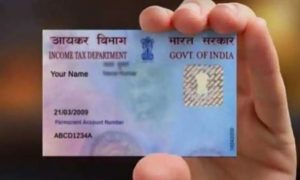Despite criticism from a House panel about the UDID (Unique Disability ID) program’s inability to provide real-time data on Persons with Disabilities (PwDs), the Union government has introduced new gazette notifications. These require all UDID applicants, regardless of age, to present an Aadhaar card or proof of having applied for one.
Issued last year, the notification mandates that disabled individuals must show an Aadhaar card to access government benefits. If they do not have an Aadhaar number, they must provide an Aadhaar enrolment slip along with other necessary documents to qualify for these benefits. The Department of Empowerment of Persons with Disabilities (Divyangjan) has made Aadhaar compulsory for accessing six types of scholarships: pre-matric, post-matric, top-class education, national overseas scholarship, national fellowship, and free coaching.
Read More: Ayushman Bharat: Senior citizens aged 70 and above to get these benefits
Additionally, various services, including the Deendayal Divyangjan Rehabilitation Scheme, Niramaya, Assistance to Disabled Persons for Purchase/Fitting of Aids and Appliances, District DisabilityRehabilitation Centres (DDRC), residential care for adults, and national institutes for both children and adults, will now also require an Aadhaar card.
STEPS TO FOLLOW FOR ENROLING AADHAR CARD FOR DISABLED PERSONS
Obtaining an Aadhaar card for a physically disabled person involves a few specific steps to ensure the process is as smooth and accessible as possible.
- Before you start, could you make sure you have all the necessary documents ready? This includes proof of identity (like a passport or voter ID), proof of address (such as utility bills or bank statements), proof of date of birth (like a birth certificate), and, if available, a disability certificate from a recognised authority.
- Locate the nearest Aadhaar Enrolment Centre by visiting the UIDAI website. If visiting the centre is difficult due to physical disabilities, call ahead to check if they can provide special assistance or arrange for home enrolment.
- When you arrive at the enrolment centre, inform the staff about any specific assistance you might need. If it’s challenging to visit the centre, request a home visit for enrolment by contacting UIDAI for details on how to arrange this service.
- Complete the Aadhaar Enrollment Form, which you can get at the centre or download from the UIDAI website. If you need help filling out the form, the staff at the centre can assist you.
- During the enrolment process, your biometric data, including fingerprints, iris scans, and a photograph, will be collected. If you face difficulties with this, let the staff know so they can offer alternative methods or additional help.
- After completing the process, you’ll receive an acknowledgement slip with an Enrollment ID.
- Use the Enrolment ID to check the status of your Aadhaar application on the UIDAI website.
- Once your Aadhaar card is processed, it will be sent to your registered address. You can also download an electronic version (e-Aadhaar) from the UIDAI website.
People who are unable to walk and not able to walk by themselves can also enrol for Aadhar services. For such people, there are special privileges given by UIDAI in which the Aadhar Enrolment officials visit the Bed-Ridden Person’s House to enrol him or her for an Aadhar Card.



































